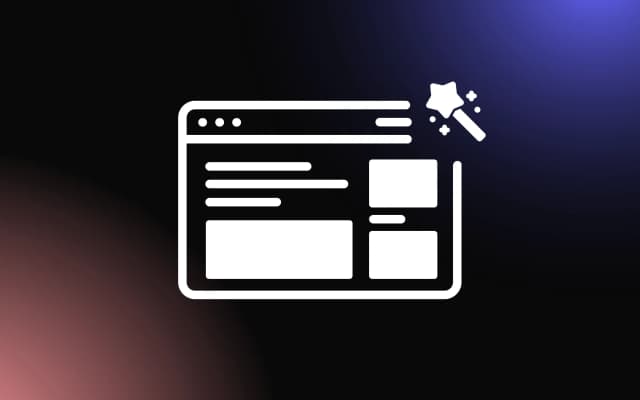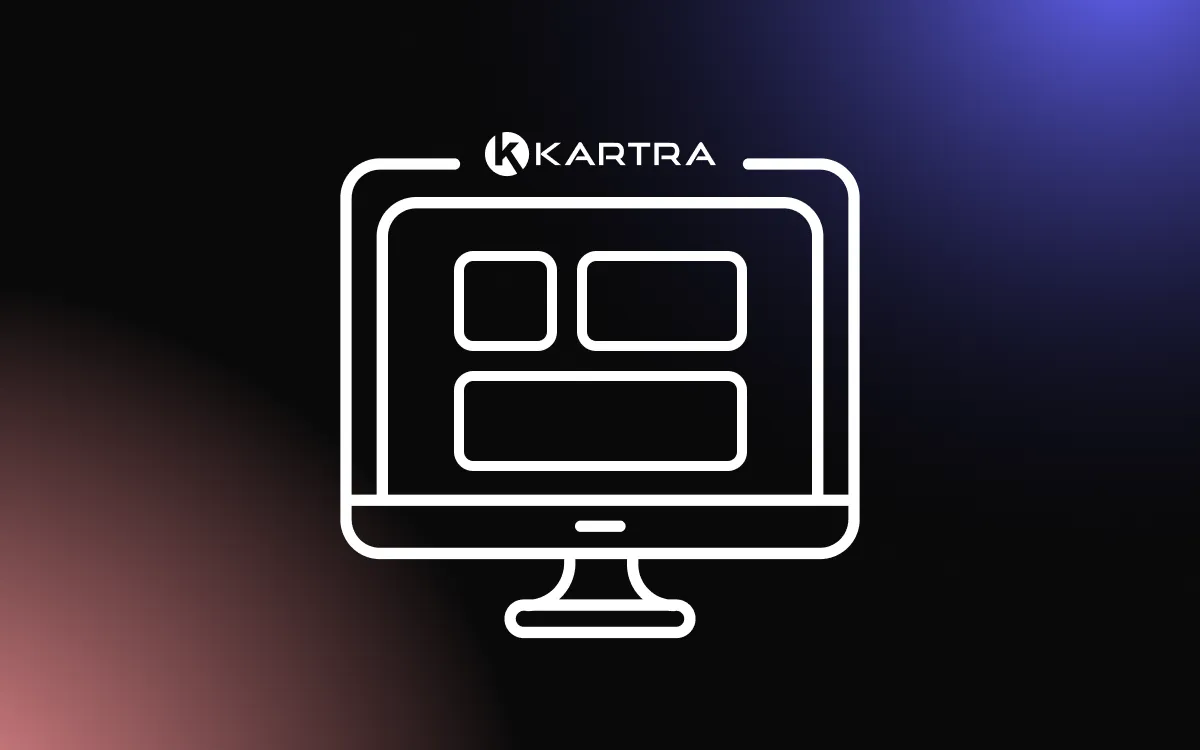
In the realm of digital marketing, a well-designed landing page can be your most powerful tool, acting as your virtual salesperson, and converting curious visitors into committed customers.
But what elements make a landing page truly effective? From the psychology of color choices to the strategic placement of your call-to-action buttons, there’s a whole science behind this digital art form.
This article aims to guide you through the process of creating compelling, effective landing pages for your website. Whether you’re a seasoned developer or a small business owner on the brink of launching your first website, you’ll discover insights and techniques that will help maximize your online reach and conversion rates.
Let’s demystify the magic behind masterful landing pages, and get you on the fast track to a higher-performing website.
Understanding Your Audience

Identifying Your Target Market
Understanding your audience on a deep and multifaceted level is the foundation of crafting a highly effective landing page. A thorough demographic analysis — which encapsulates aspects such as age, gender, location, income level, education, and occupation — allows you to design a page that mirrors your audience’s identity and lifestyle.
But demographic analysis only scratches the surface; delving into the world of psychographic analysis, we begin to grasp our audience’s attitudes, interests, lifestyle choices, values, and even personality traits.
By melding these two modes of analysis, you create a landing page that not only reflects your audience’s external world but also appeals to their emotional needs and intrinsic motivations.
This holistic approach to audience understanding can be the game-changer in your journey of designing powerful, resonating landing pages.
The Role of Audience Segmentation in Landing Pages
Audience segmentation involves dividing your broader target market into smaller, more homogeneous groups based on specific characteristics.
Each segment may respond differently to different design elements, copy, and CTAs, allowing you to tailor your landing pages to each segment for better results.
Aligning the Landing Page with Customer Needs and Expectations
Your landing page should reflect what your target audience is looking for. It should present a solution to their problem, offer a compelling value proposition, and provide a seamless user experience to meet their expectations.
Defining Your Objectives

Setting Clear Goals for Your Landing Page
Having clear goals for your landing page is crucial to its success. Whether you want to generate leads, make sales, promote a product, or register users for an event, your goal will shape the content, design, and structure of your landing page.
Types of Landing Pages Based on Different Goals
Lead Generation Pages
Lead generation pages aim to collect user information, such as names and email addresses, that you can use to nurture leads through your sales funnel.
Click-Through Pages
Click-through pages aim to persuade visitors to click through to another page where they can make a purchase or complete another type of conversion.
Sales Pages
Sales pages aim to persuade visitors to make a purchase directly on the page.
Event Registration Pages
Event registration pages aim to persuade visitors to sign up for an event or webinar.
Crafting Compelling Headlines

In the world of landing pages, the power of first impressions cannot be overstated, and your headline plays a crucial role in making this first impression a positive one.
As the initial element visitors encounter on your page, a well-crafted headline has the power to not only seize their attention but also ignite interest in your offering and encourage them to stay and take action.
So, what makes a headline truly effective? It boils down to three critical components: clarity, brevity, and allure.
An effective headline cuts straight to the chase, encapsulating your value proposition in a language that resonates with your target audience.
Yet, it doesn’t stop there. It also weaves in an element of urgency or excitement, transforming a mere statement into a compelling call to engage. By mastering this balance, you can turn your headline into a powerful invitation, driving interaction and conversion on your landing page.
Designing the Layout

Importance of Visual Hierarchy
Visual hierarchy involves arranging and presenting elements in a way that indicates their importance. It guides the visitors’ eyes to the most important elements first, such as your headline, main benefits, and CTA.
Positioning Key Elements
The Hero Shot
The hero shot is a prominent image or video at the top of your landing page that quickly communicates your offering. It should be visually appealing and relevant to your product or service.
Call to Action (CTA)
The CTA is one of the most important elements on your landing page. It should be prominently placed and stand out from the rest of the page.
Testimonials and Reviews
Testimonials and reviews are powerful trust signals that can help convince visitors of the value of your offering. They should be strategically positioned to support your value proposition and persuade users to take action.
Designing for Different Screen Sizes
In today’s multi-device world, it’s crucial that your landing page performs well and looks good on all screen sizes. This means implementing responsive design practices to ensure a seamless user experience across desktops, tablets, and mobile devices.
Writing Persuasive Copy

Importance of Conciseness and Clarity
Your landing page copy should be clear and concise. It should quickly communicate your value proposition and persuade visitors to take action without overwhelming them with too much information.
Employing AIDA (Attention, Interest, Desire, Action) Model
The AIDA model can guide the structure of your landing page copy. Start by grabbing attention with your headline, generate interest with compelling benefits, create desire with social proof or emotional appeals, and finally prompt action with a clear and persuasive CTA.
Using Testimonials and Social Proof
Testimonials and social proof help build trust and credibility. Including positive customer testimonials, endorsements from experts, or stats about your user base can persuade visitors that your offering is valuable and reliable.
Creating Effective Calls to Action (CTA)

The Importance of a Strong CTA
A strong CTA is crucial to driving conversions on your landing page. It tells visitors exactly what action you want them to take and what they will get in return.
Best Practices for Creating CTAs
Use Action-Oriented Verbs
Your CTA should start with a strong, action-oriented verb like “Download,” “Register,” “Buy,” “Sign up,” or “Get started.”
Make It Stand Out with Design
Your CTA should stand out from the rest of the page. This could mean using a contrasting color, larger font, or adding a button around your CTA text.
Aligning CTA with the Landing Page Goals
Your CTA should clearly align with your landing page goals. For example, if the goal is to generate leads, your CTA could be “Sign up for a free trial.” If the goal is to make sales, your CTA could be “Buy now.”
Implementing Trust Signals

What are Trust Signals?
Trust signals are elements that build trust and credibility with your audience. They reassure visitors that your company is legitimate and that your offering is reliable.
Types of Trust Signals
Testimonials and Reviews
Testimonials and reviews from satisfied customers can reassure new visitors of the quality of your offering.
Certifications and Awards
Displaying certifications, awards, or recognitions your company has received can show visitors that your business is reputable and your products or services are of high quality.
Privacy Policies and Secure Checkout Badges
If your landing page involves a form or transaction, displaying privacy policies and secure checkout badges can reassure visitors that their personal information will be safe.
Optimizing for Search Engines (SEO)

Role of SEO in Landing Page Success
SEO can help your landing page rank higher in search engine results, leading to increased organic traffic. This means using relevant keywords in your content, optimizing your meta tags, and ensuring your page loads quickly.
Implementing Keyword Research
Keyword research involves identifying the words and phrases your target audience uses when searching for products or services like yours. Incorporating these keywords into your landing page content can improve your search engine rankings and attract more relevant traffic.
URL, Title Tag, and Meta Description Optimization
Optimizing your URL, title tag, and meta description can improve your landing page’s search engine visibility. These elements should include relevant keywords and accurately represent the content of your page.
A/B Testing for Landing Page Optimization

Importance of A/B Testing
A/B testing is crucial for landing page optimization. By testing different versions of your landing page, you can identify what works best for your audience and make data-driven decisions to improve your conversion rate.
Elements to Test
You can A/B test various elements on your landing page, including headlines, copy, images, layout, CTA, and color schemes. The goal is to find out what resonates most with your audience and leads to the highest conversions.
Tools and Techniques for A/B Testing
There are many tools available for A/B testing, such as Optimizely, Google Optimize, and Visual Website Optimizer. These tools allow you to easily create different versions of your landing page, split your traffic between them, and collect data on user interactions and conversions.
Common Mistakes to Avoid

Overcrowding the Page
Overcrowding your landing page with too much text, images, or elements can confuse and overwhelm visitors. Keep your design clean and simple, focusing on the most important information and eliminating unnecessary distractions.
Weak Headlines and CTAs
Your headline and CTA are critical for grabbing attention and driving conversions. Avoid vague, generic, or unexciting headlines and CTAs. Instead, make them clear, compelling, and focused on the value you offer.
Neglecting Mobile Optimization
With more people browsing the web on mobile devices, it’s crucial to ensure your landing page is mobile-friendly. Neglecting mobile optimization can lead to a poor user experience and lower conversions for mobile users.
Monitoring Landing Page Performance

Essential Metrics to Track
Conversion Rate
Conversion rate is the percentage of visitors who complete the desired action on your landing page. It’s a key indicator of your landing page’s effectiveness.
Bounce Rate
The bounce rate is the percentage of visitors who leave your landing page without taking any action. A high bounce rate could indicate that your landing page is not engaging or relevant to your visitors.
Time on Page
Time on page measures how long visitors stay on your landing page. A longer time on the page could indicate that visitors are engaged with your content and more likely to convert.
Making Data-Driven Improvements
By monitoring these and other metrics, you can gain insights into how your landing page is performing and where there’s room for improvement. Use this data to make informed decisions about changes to your design, copy, CTA, and other elements.
Conclusion
To wrap things up, it’s important to remember that creating a successful landing page is an art that combines several key elements, tied together by a commitment to ongoing refinement and adaptation.
This journey begins with a profound understanding of your audience and is guided by clearly defined objectives. The road is paved with captivating headlines and copy, intuitive layouts, powerful call-to-actions (CTAs), and well-implemented trust signals — all underpinned by a strong SEO foundation.
But the journey doesn’t end at launch. Like any successful venture, a high-performing landing page is a product of continuous improvement, molded by testing, learning, and iterating to stay abreast of evolving user preferences and industry trends.
So, as you embark on this exciting journey of landing page creation, remember to embrace this continuous cycle of refinement as your pathway to achieving the best results. Good luck!



